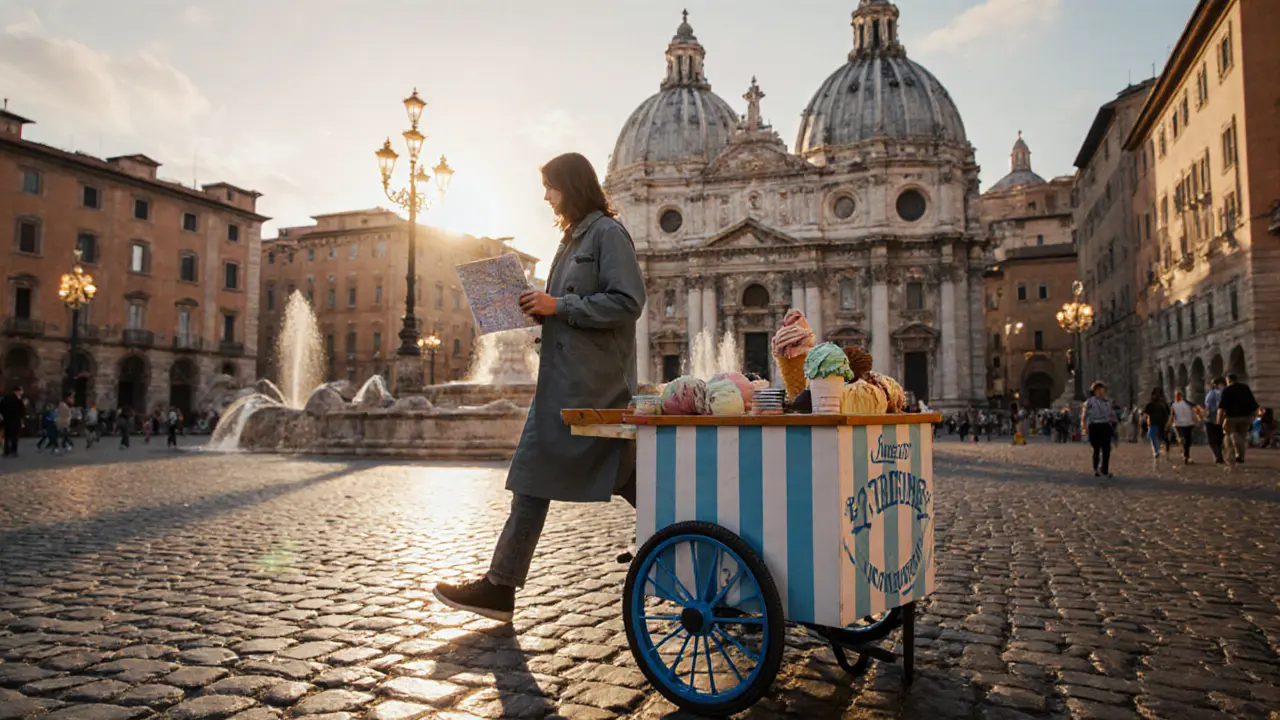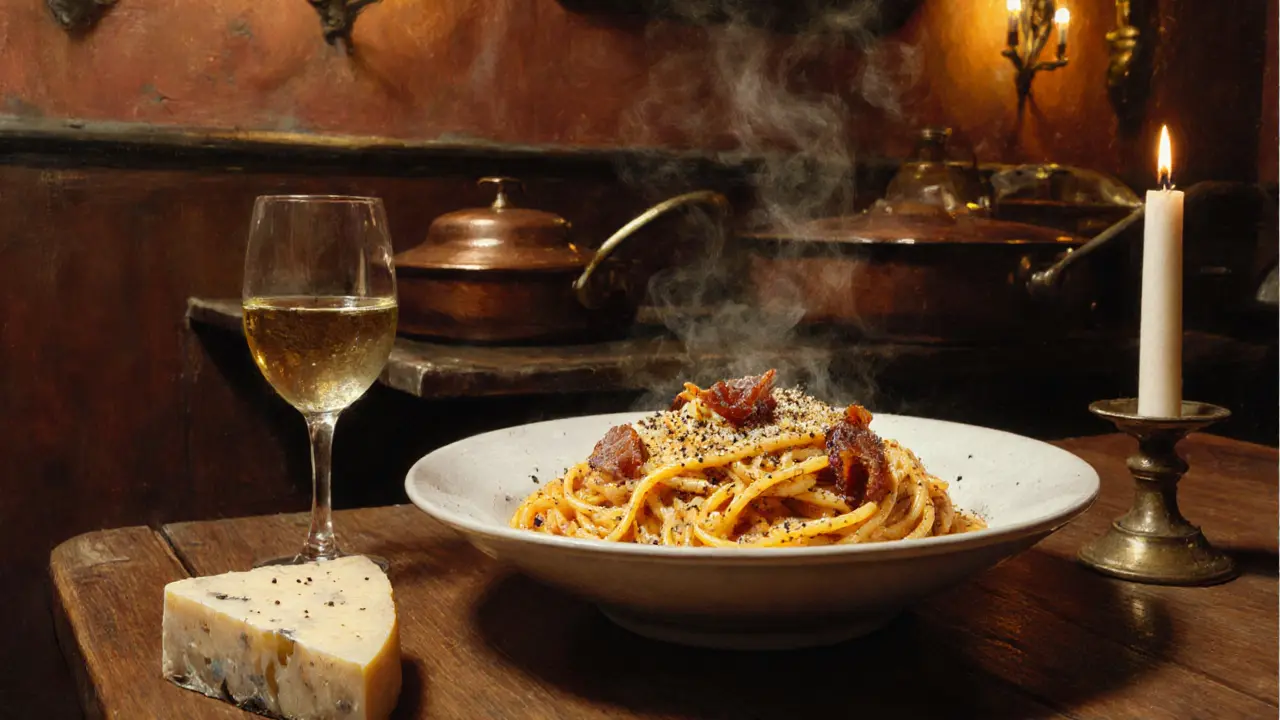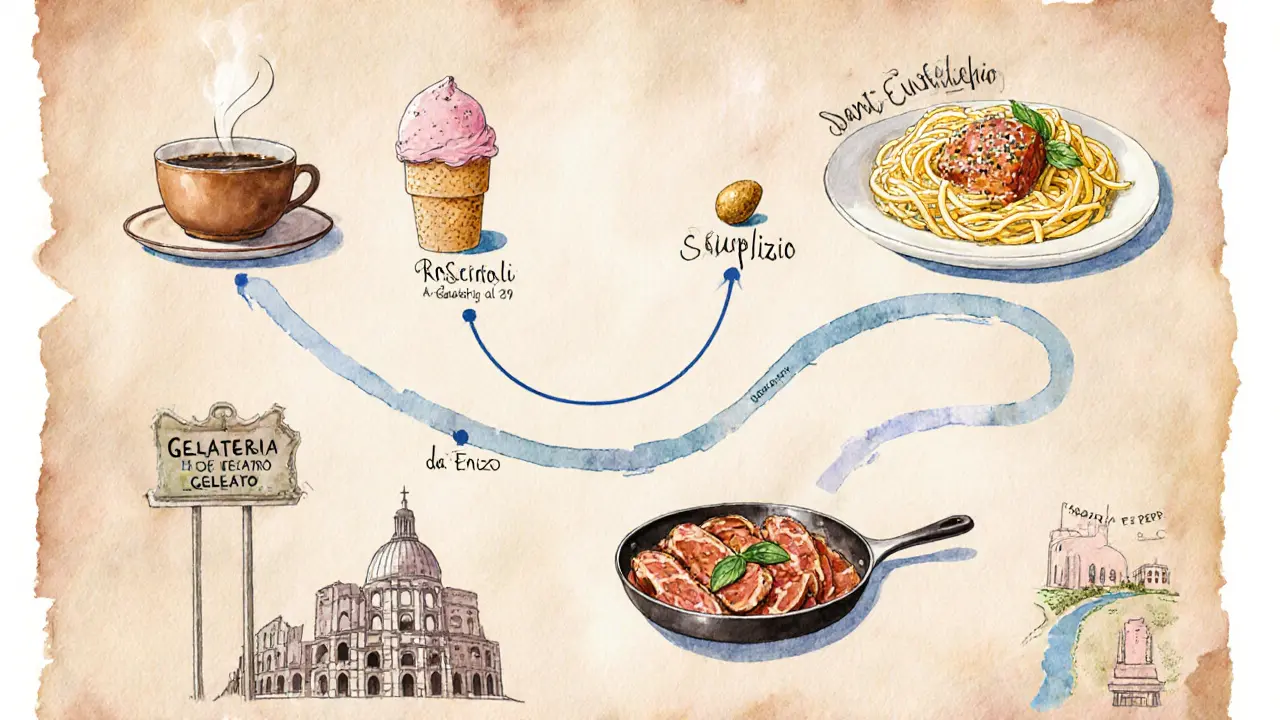
When you land in the Eternal City, the biggest decision isn’t which museum to hit first-it’s which plate to savor next. Rome’s culinary scene is a lively mix of age‑old recipes and modern twists, and knowing where to find the authentic flavors can turn a good trip into an unforgettable one. Below is a down‑to‑earth guide that tells you exactly what dishes to hunt, which eateries nail them, and how to navigate the city’s food culture without breaking the bank.
Signature Roman Dishes You Can’t Miss
Rome has a handful of dishes that define its identity. Each one tells a story of the city’s history, its neighborhoods, and the people who have been cooking them for generations.
- Spaghetti alla Carbonara is a creamy pasta made with eggs, Pecorino Romano, guanciale, and black pepper. The magic lies in the silky sauce that coats each strand without any cream.
- Cacio e Pepe translates to “cheese and pepper.” This minimalist dish relies on starchy pasta water, Pecorino Romano, and freshly cracked pepper to create a glossy coat.
- Supplì are deep‑fried rice balls stuffed with mozzarella and a slight tomato ragù core. Crispy on the outside, gooey inside.
- Saltimbocca alla Romana pairs tender veal with prosciutto and sage, finished in a white‑wine butter sauce. The name means “jumps in the mouth.”
- Gelato in Rome is a ritual. Look for flavors that use fresh fruit, pistachio, and the classic stracciatella.
Each of these dishes is a benchmark for any restaurant claiming to serve true Roman cuisine.
Where to Find the Best Versions
Now that you know what to order, here’s where locals and seasoned travellers consistently point their forks.
- Roscioli - a hybrid deli‑restaurant in the historic centre. Their carbonara is legendary, using carbons from guanciale that melt into the sauce. The ambience feels like stepping into a bustling market hall.
- Signature: Spaghetti alla Carbonara
- Price range: €€-€€€
- Neighborhood: Campo de' Fiori
- Trattoria Da Enzo al 29 - tucked away in Trastevere, this tiny spot perfects cacio e pepe with a pepper‑crusted rim that adds a subtle crunch.
- Signature: Cacio e Pepe
- Price range: €€
- Neighborhood: Trastevere
- Supplizio - a modern street‑food stall near the Pantheon that serves a variety of supplì, including a truffle‑infused version for the adventurous.
- Signature: Classic Supplì
- Price range: €
- Neighborhood: Centro Storico
- Hostaria dell'Angelo - known for its melt‑in‑your‑mouth saltimbocca, cooked in a pan that’s been seasoned for decades.
- Signature: Saltimbocca alla Romana
- Price range: €€
- Neighborhood: Monti
- Gelateria del Teatro - hides behind a tiny façade near Piazza Navona; its pistachio gelato is made from locally sourced nuts, giving it an unforgettable aroma.
- Signature: Pistachio Gelato
- Price range: €
- Neighborhood: Navona
Quick Comparison of the Top 5 Eateries
| Restaurant | Signature Dish | Price Range | Neighborhood | Reservation Needed? |
|---|---|---|---|---|
| Roscioli | Carbonara | €€-€€€ | Campo de' Fiori | Strongly recommended |
| Da Enzo al 29 | Cacio e Pepe | €€ | Trastevere | Yes, especially evenings |
| Supplizio | Supplì (classic) | € | Centro Storico | No |
| Hostaria dell'Angelo | Saltimbocca | €€ | Monti | Recommended for large groups |
| Gelateria del Teatro | Pistachio Gelato | € | Navona | Not applicable |

Practical Tips for Dining Like a Roman
- Timing matters: Lunch (12:30-14:30) and dinner (19:30-22:00) are peak hours. Arriving 10minutes early often secures a seat without a reservation.
- Reserve ahead: For Roscioli, Da Enzo, and Hostaria dell'Angelo, book at least 48hours in advance via phone or a quick online form. Walk‑ins work best at Supplizio and gelaterias.
- Mind the menu language: “Antipasto” means starter, “Primo” is the first course (typically pasta), “Secondo” is the main protein, and “Dolce” is dessert. Order a “caffè” after dessert to aid digestion.
- Split the bill: Italian restaurants expect a single check. If you’re in a group, ask the waiter to split it before they print the bill.
- Tip etiquette: Service charge is included, but leaving a few euros for exceptional service is appreciated.
Food Markets & Street‑Side Eats
Beyond sit‑down restaurants, Rome’s markets are a treasure trove for quick bites and fresh produce.
Campo de' Fiori Market buzzes every morning with stalls selling fresh mozzarella, cured meats, and roasted chestnuts. Grab a panino with mortadella and a slice of pecorino for a cheap, authentic snack.
For seafood lovers, Testaccio Market offers fried calamari and grilled sardines at stalls that cater to locals more than tourists.
These markets double as social hubs-try a glass of local wine, strike up a conversation with a vendor, and you’ll pick up insider tips on hidden eateries.

Design Your Own Roman Food Tour
- Start with a light espresso at Sant'Eustachio Il Caffè near the Pantheon.
- Stroll to Roscioli for a mid‑morning carbonara (reserve for lunch).
- Walk through Campo de' Fiori market, tasting fresh fruit and a quick supplì.
- Cross the Tiber to Trastevere; sit at Da Enzo for cacio e pepe.
- Take a short break at Gelateria del Teatro for pistachio gelato.
- End the day in Monti at Hostaria dell'Angelo, sharing saltimbocca and a bottle of Frascati wine.
This loop covers three neighborhoods, three classic dishes, and a sweet finish-all doable in a single day if you pace yourself.
Frequently Asked Questions
Do I need a reservation for Rome’s top restaurants?
Yes. Places like Roscioli, Da Enzo al 29, and Hostaria dell'Angelo often fill up quickly, especially during dinner. A phone call or online reservation 48hours in advance ensures you won’t wait.
What’s the typical price for a pasta dish in a mid‑range Roman restaurant?
A main‑course pasta usually costs between €12 and €20, depending on the restaurant’s location and whether it’s a specialty dish like carbonara.
Are there vegetarian‑friendly options for traditional Roman dishes?
Absolutely. Many trattorias serve a vegetarian cacio e pepe, and you can find artichoke‑based dishes like Carciofi alla Romana. Supplì with just mozzarella also work well.
Can I eat the same dish at multiple restaurants in one day?
It’s common to sample the same dish in different spots to compare styles. For example, trying carbonara at both Roscioli and a smaller osteria lets you taste subtle variations in guanciale quality and cheese ratio.
What’s the best time of day to visit the food markets?
Morning, between 8am and 11am, when stalls are fully stocked and the crowds are lighter. You’ll also catch the freshest produce and the friendliest vendors.



